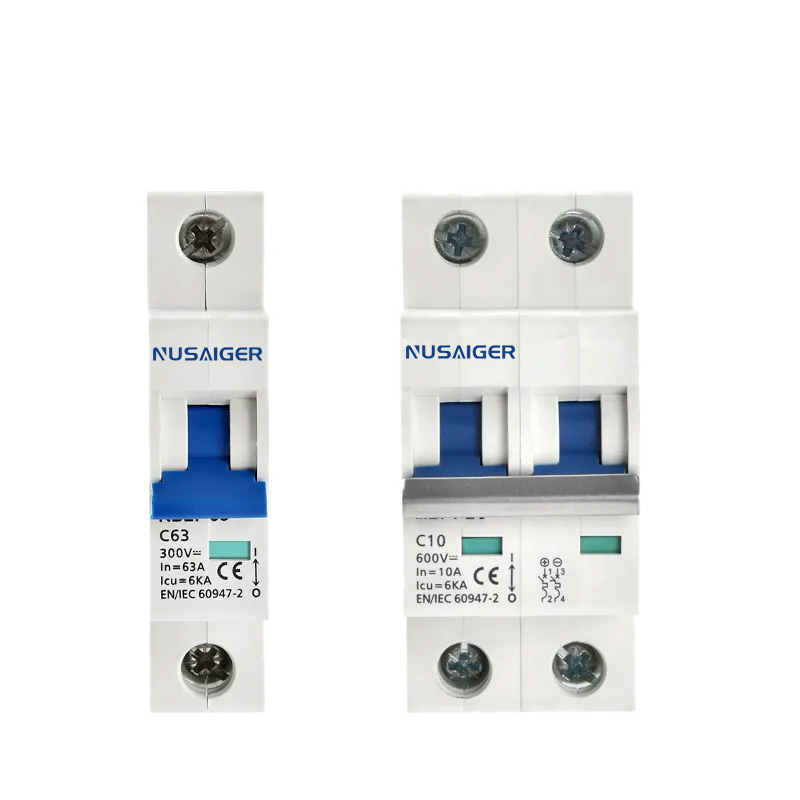Comprehensive Guide to Residential, Commercial, and Industrial Miniature Circuit Breakers (MCBs)
1. Introduction
Miniature Circuit Breakers (MCBs) are essential devices that protect electrical circuits from overloads and short circuits. Understanding their proper use across residential, commercial, and industrial environments ensures safety, reliability, and compliance.
2. Residential Applications
Residential electrical systems benefit from MCBs in various ways:
- Protection for lighting circuits and general outlets.
- Type B MCBs commonly used for household applications due to low inrush currents.
- Combination with RCDs (Residual Current Devices) for enhanced personal safety.
- Ensures reliable operation of kitchen appliances, HVAC, and home entertainment systems.
3. Commercial Applications
In commercial buildings, MCBs are crucial for protecting offices, shops, and medium-sized installations:
- Type C MCBs handle moderate inrush currents for small motors and lighting systems.
- Three-phase MCBs are employed for larger HVAC systems and commercial machinery.
- Integration with energy management systems helps monitor and optimize electrical load.
- Smart MCBs allow remote monitoring and predictive maintenance.
4. Industrial Applications
Industrial environments demand high-capacity and reliable MCB solutions:
- Type D MCBs protect heavy machinery with high inrush currents.
- High breaking capacity ensures safe interruption of industrial short circuits.
- Three-phase and four-pole MCBs protect motors, production lines, and critical equipment.
- Environmental considerations include vibration, dust, and temperature extremes.
- Periodic maintenance and testing are critical for operational safety.
5. MCB Types and Tripping Characteristics
- Type B: Trips at 3–5 times rated current, suitable for resistive loads.
- Type C: Trips at 5–10 times rated current, suitable for small inductive loads.
- Type D: Trips at 10–20 times rated current, ideal for large motors.
- Type K & Z: Specialized MCBs for sensitive equipment and high inrush loads.
6. Selection Criteria
- Assess load current, type, and expected inrush current.
- Choose appropriate MCB type and number of poles.
- Verify rated voltage and breaking capacity against system requirements.
- Consider environmental conditions such as temperature and humidity.
- Ensure compliance with IEC, UL, and local electrical codes.
7. Installation Guidelines
- Turn off main power supply before installation.
- Mount MCBs securely on DIN rails.
- Use correct wire gauge and tighten terminals to recommended torque.
- Label each MCB clearly for circuit identification.
- Test each MCB manually before energizing circuits.
- Maintain adequate spacing for ventilation and future maintenance.
8. Maintenance Practices
- Visual inspection for damage, discoloration, or dust accumulation.
- Check terminal tightness and re-torque if necessary.
- Perform functional testing by tripping and resetting MCBs.
- Monitor temperature and environmental factors that may require derating.
- Keep maintenance records for compliance and safety audits.
9. Troubleshooting Common Issues
- Frequent tripping: Check for overload, short circuits, or wrong MCB type.
- MCB fails to trip: May indicate mechanical failure; replacement required.
- Buzzing or overheating: Tighten loose connections and verify load rating.
- Residual current issues: Inspect grounding and earth leakage paths.
- Environmental degradation: Protect against moisture, dust, and vibration.
10. Case Studies
Residential: Upgrading kitchen circuits with Type B MCBs to prevent overload trips.
Commercial: Office lighting and small motors protected with Type C MCBs to reduce downtime.
Industrial: Heavy machinery protected using Type D MCBs, ensuring safe operation under high inrush currents.
11. Safety Standards
- IEC 60898: Residential and commercial MCB standard.
- UL 489: North American MCB compliance.
- EN 60947: Industrial MCB safety standard.
- Always adhere to local codes for installation and maintenance.
12. Smart MCB Integration
Modern electrical systems leverage smart MCBs for:
- Remote monitoring and alert systems.
- Integration with building management systems (BMS).
- Predictive maintenance to prevent downtime.
- Enhanced energy management and load balancing.
- Compact and modular panels for flexible installations.
13. Long-Term Reliability Tips
- Select MCBs from reputable manufacturers with proper certification.
- Keep electrical panels clean, dry, and free of dust.
- Perform periodic testing and inspection to detect early wear.
- Document all circuits for easier maintenance and troubleshooting.
- Upgrade to smart MCBs for advanced monitoring and fault detection.
14. Future Trends
Electrical distribution is evolving with IoT, renewable integration, and smart energy management:
- Wireless monitoring and remote reset of MCBs.
- Integration with solar, battery storage, and EV charging systems.
- Predictive analytics for early detection of faults.
- Enhanced environmental resistance for harsh industrial conditions.
- Modular, compact designs for modern high-density panels.
15. Conclusion
Understanding the use of MCBs across residential, commercial, and industrial applications is crucial for electrical safety and efficiency. Proper installation, maintenance, and troubleshooting, along with compliance with international standards, ensure reliable performance and protection against electrical faults. Integrating smart MCB solutions enhances monitoring, energy management, and predictive maintenance capabilities, keeping electrical systems ready for modern demands.



